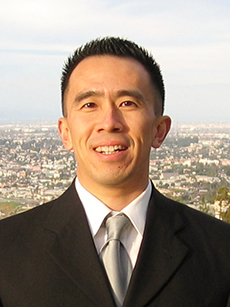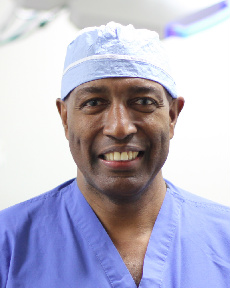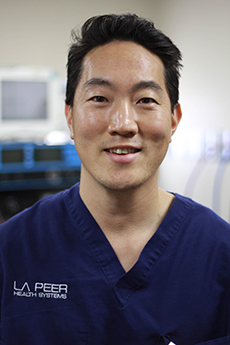Gastrointestinal problems will have disorders in particular organs that include intestines, stomach, gallbladder, pancreas, liver and the leading ducts between organs. Gastrointestinal problems may cause an extensive array of symptoms and assessment of a physician is important to identify the causes of the problems.
Heartburn
Those who are experiencing heartburn that stays after modifications to dietary habits and home treatment might be having a gastrointestinal disorder. People with Gastroesophageal reflux disease (GERD) will experience constant heartburn, bad taste and indigestion. People who have gastric disorders like ulcer may have heartburn too that may come with indigestion.
Bowel Changes
People who are experiencing gastrointestinal problems can feel changes in their bowel movements. They might be having constipation and diarrhea from gastrointestinal problems like diverticulitis and hepatitis. They are also likely to experience bloody stools, light colored stools and mucus-filled tools.
Gas
People who have gastrointestinal problems may experience uncontrollable or frequent gas. Peptic ulcers, irritable bowel syndrome and celiac disease may cause excessive and painful flatulence. These people with such problems may have constant belching that may happen frequently after taking in some fibrous foods or fermented or carbonated beverages.
Pain
Those with gastrointestinal problems like diverticulitis are likely to have abdominal and stomach tenderness. Other gastrointestinal problems including Crohn’s disease can cause cramping and pain during a bowel movement. People with peptic ulcers can experience frequent stomach discomfort and pain that becomes worse when they lay down.
Common Gastrointestinal Problems
There are millions of people in the world who are experiencing gastrointestinal problems that range from heartburn, indigestion, ulcer, diarrhea, gas, irritable bowel syndrome (IBS). These problems can cause discomfort and may be frustrating.
These problems affect both men and women of all ages, though they are more common in women. Acute problems can be treated easily and changes to lifestyles are usually recommended for these.
Constipation– This is described as a decrease in the volume and frequency of bowel movements. This usually comes with discomfort that passes a motion or permanent lower abdomen discomfort.
Indigestion– This problem is associated with too much stomach acid which could be a result of a huge alcohol intake or greasy and spicy meal.
Diarrhea – An increase in frequency of bowel movements and the discharge of loose watery stools. A person with diarrhea may also have abdominal cramps and nausea.
Irritable bowel syndrome (IBS) – This is a functional bowel disorder which means that the function of the digestive tract is impaired. A person may experience abdominal bloating, pain and gas, mucus in stool. irregular bowel habits with constipation, diarrhea or both.
Ulcer– This condition is described by a small hole or erosion in the gastrointestinal tract.
Gas– The presence of gas in the digestive tract is demonstrated by abdominal pain, bloating and bleaching.
Causes of Gastrointestinal Problems
Complaints associated to digestive system usually occur in an ambulatory clinic setting. The uneasiness or discomfort can be stress or diet or psychogenic related. It is possible for such systematic disease to manifest as gastrointestinal symptoms. The majority of problems tend to overlap with organic and functional causes. The following are the major causes of gastrointestinal problems.
- Functional Disturbances
- Deficiency of secretory IgA
- Deficiency of stomach acid
- Insufficiency of pancreatic digestive enzymes
- Microbial imbalances
- Viral infections
- Parasitic infections
- Bacterial overgrowth
- Normal flora imbalances
- Destructive agents
- Excessive alcohol
- Environmental chemicals
- Food vulnerabilities
- Pharmaceutical agents
- Oxidative stress
Diagnosis of Gastrointestinal Problems
Diagnosing gastrointestinal problems will vary according to the type of gastrointestinal disorder. Usually, the symptoms, medical history and physical examination of patients will be the basis of the diagnosis.
Constipation- The doctor may perform an examination to the thyroid gland and the nervous system as well as check medications to determine that such constipation is not a side effect of something else. Typically constipation cases are either diagnosed in a medical clinic or self-diagnosed.
Inflammatory Bowel Disease (IBS) – It is not easy to diagnose inflammatory bowel disease and it is usually mistaken for uncomfortable bowel syndrome. An irritable bowel syndrome does not demonstrate the inflammation that is typical to ulcerative colitis and Crohn’s diseases. The diagnosis for IBS is performed according to the symptoms, physical examination and medical history of the person.
Diarrhea- Apart from asking about the medical history, performing physical examination and testing routine urine, stool and blood tests, the physician may recommend colonoscopy and sigmoidoscopy test for a case of diarrhea.
Indigestion- The physician is likely to ask about the symptoms of indigestion, any taken medication and the lifestyle of the patient. The GP may further perform other examinations like pressing gently some areas of the body to know whether or not it is painful.
Hemorrhoids- This disorder is diagnosed by performing a rectal examination. For internal hemorrhoids, a physician will insert an anoscope. The entire rectum will be examined by using a proctoscope. Sigmoidoscopy or colonoscopy can also be performed to examine the inner part of the colon and reveal other gastrointestinal bleeding causes.

 The Department of Anesthesiology at La Peer Health Systems is solely focused on the health of the patient, preparation for surgery, a successful surgery, and managing their patient’s post-surgical pain. Prior to surgery, our anesthesiologists meet with patients to understand the medical history of the patient and decide on the best course of action. The safest, most appropriate anesthetic will be tailored to individual patient needs, with consideration given to patient preference. Following in the spirit of collaboration, the final anesthetic plan will be formulated with the consensus of the patient, anesthesiologist, and surgeon. We believe that it is imperative that the patient is informed and understands their treatment plan.
The Department of Anesthesiology at La Peer Health Systems is solely focused on the health of the patient, preparation for surgery, a successful surgery, and managing their patient’s post-surgical pain. Prior to surgery, our anesthesiologists meet with patients to understand the medical history of the patient and decide on the best course of action. The safest, most appropriate anesthetic will be tailored to individual patient needs, with consideration given to patient preference. Following in the spirit of collaboration, the final anesthetic plan will be formulated with the consensus of the patient, anesthesiologist, and surgeon. We believe that it is imperative that the patient is informed and understands their treatment plan. Our anesthesia staff is wholly comprised of board-certified physicians with many years of experience in anesthesiology. Our anesthesiologists continue to regularly practice and hone their skills at a large tertiary care hospital in Los Angeles.
Our anesthesia staff is wholly comprised of board-certified physicians with many years of experience in anesthesiology. Our anesthesiologists continue to regularly practice and hone their skills at a large tertiary care hospital in Los Angeles.




